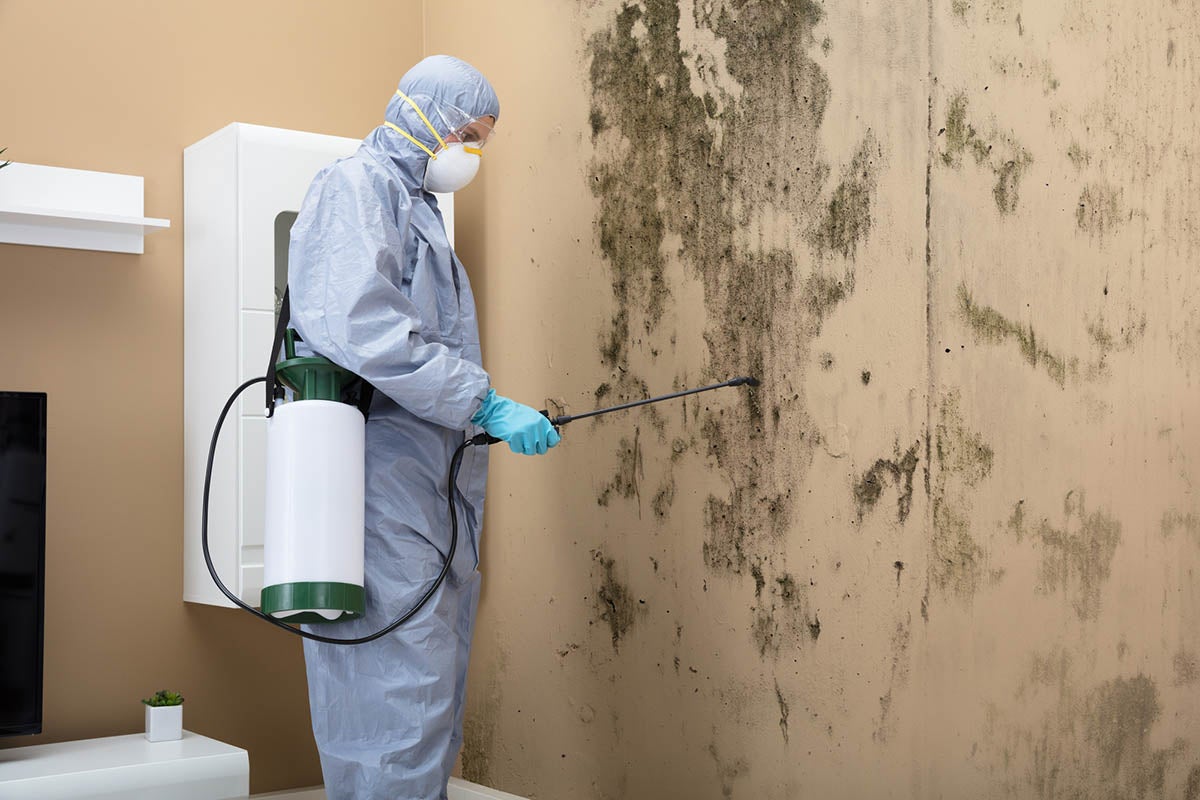Guaranteeing Post Remediation Verification Precision
Wiki Article
Expert Tips for Blog Post Mold And Mildew Removal Success
In the world of mold and mildew removal, efficiently eradicating mold and mildew is just half the fight; the real difficulty lies in avoiding its reappearance. By adhering to skilled pointers and ideal methods, people can secure their areas against mold and mildew renewal and preserve a healthy and balanced interior atmosphere.
Screen Humidity Degrees On A Regular Basis
After completing mold and mildew remediation treatments, keeping optimal moisture degrees is important to protect against mold re-growth and make certain a healthy indoor setting. High humidity degrees over 60% create a helpful environment for mold to prosper, making regular keeping an eye on an aggressive step to avoid any kind of future mold and mildew issues.Making use of hygrometers or moisture meters can aid in precisely gauging humidity levels in different areas of the residential property. These devices provide real-time data that enables removal experts to make educated decisions regarding ventilation, dehumidification, and other required activities to preserve optimal humidity degrees post-remediation. In addition, establishing a regular schedule for moisture checks, specifically in risky areas such as shower rooms, kitchens, and cellars, is an aggressive approach to mold avoidance. By continually checking moisture levels, homeowner can successfully minimize the danger of mold reoccurrence and preserve a healthy interior atmosphere post-remediation.
Conduct Thorough Inspections Post-Remediation
Complying with the completion of mold and mildew remediation procedures, it is vital to conduct detailed evaluations to verify the performance of the remediation process. These post-remediation assessments are important in ensuring that the mold problem has actually been effectively addressed and that there is no reoccurrence or staying mold and mildew growth. Evaluations must be executed by qualified specialists that have competence in identifying mold and examining interior air high quality.Throughout these evaluations, different methods such as aesthetic evaluations, air tasting, and surface area tasting may be employed to thoroughly assess the remediated areas. Aesthetic assessments involve a detailed assessment of the facilities to look for any kind of visible indications of mold growth or water damage. Air sampling assists in figuring out the airborne mold and mildew spore levels, while surface sampling can identify mold and mildew fragments on surface areas.
Implement Correct Ventilation Strategies
After ensuring the effectiveness of the mold removal process through thorough examinations, the next important step is to focus on carrying out proper ventilation approaches. Ample air flow is vital in protecting against mold reoccurrence by managing dampness degrees and advertising air flow. To accomplish this, it is recommended to use exhaust followers in locations susceptible to high moisture, such as kitchen areas and you could look here washrooms. Additionally, opening up doors and windows when weather condition permits can help improve air flow and decrease wetness build-up. Air purifiers and dehumidifiers are additionally valuable devices in preserving optimum indoor air high quality.
Correct air flow not just help in stopping mold and mildew growth however additionally adds to the total health and wellness and comfort of passengers. By making sure sufficient air flow throughout the building, you can minimize the threat of mold and mildew regrowth and develop a much healthier living atmosphere.

Usage Mold-Resistant Materials for Repair Works
To enhance the lasting efficiency of mold removal efforts, incorporating mold-resistant products for repair services is essential in reducing the threat of future mold development. Mold-resistant materials are made to stand up to moisture and inhibit mold and mildew growth, making them an essential selection for locations susceptible to dampness and moisture. When repairing locations impacted by mold and mildew, using materials such as mold-resistant drywall, mold-resistant paints, and mold-resistant caulking can help stop mold reoccurrence.Mold-resistant drywall is an exceptional alternative to standard drywall in locations like cellars and restrooms where moisture levels are greater. This type of drywall has a special covering that withstands mold growth even when exposed to damp conditions. Furthermore, utilizing mold-resistant paints containing antimicrobial agents can further inhibit mold development on ceilings and wall surfaces.
In areas where wetness is usual, such as bathroom and kitchens, making use of mold-resistant caulking around windows, bathtubs, and sinks can aid secure out water and avoid mold and mildew from holding in splits and gaps. By purchasing these mold-resistant materials during repairs post-remediation, you Website can dramatically lower the likelihood of future mold and mildew issues and maintain a healthier interior atmosphere.
Maintain Sanitation and Address Water Issues
After mold and mildew remediation, it is essential to keep a tidy environment to avoid the regrowth of mold and mildew. Leaks, water breach, or high humidity levels can develop the excellent breeding ground for mold, so it is crucial to fix any type of Get More Info water-related issues quickly.To keep cleanliness, think about utilizing HEPA filters in vacuum cleaners and air purifiers to catch mold and mildew spores and stop their blood circulation airborne. Making sure appropriate ventilation in areas prone to moisture buildup, such as restrooms and cooking areas, can aid maintain moisture degrees in check. By remaining cautious about cleanliness and resolving water issues quickly, you can efficiently avoid mold reinfestation and keep a healthy and balanced interior environment.
Conclusion

In the realm of mold removal, efficiently eliminating mold and mildew is only half the fight; the real challenge lies in avoiding its reappearance. After finishing mold and mildew removal procedures, keeping ideal humidity levels is crucial to prevent mold and mildew re-growth and make certain a healthy and balanced indoor environment. High humidity levels above 60% produce a favorable environment for mold to prosper, making normal checking a proactive step to prevent any future mold problems.
To boost the lasting performance of mold and mildew removal initiatives, integrating mold-resistant products for repair services is essential in alleviating the risk of future mold development. After mold removal, it is vital to preserve a clean setting to prevent the regrowth of mold.
Report this wiki page